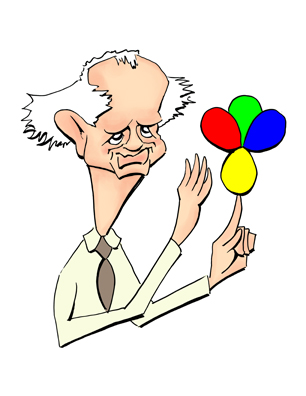Previous - 115. Crossroads
Curious
Felt a bit better today -- fever down -- and thought I could go out and get a sandwich to bring home without sounding too consumptive. (Success.) But as I was dressing to go out I thought to myself, "Last time I was this sick I ended up buying a condo." And that's when the penny dropped.It is almost exactly 20 years from when I was sick that time -- to within a week or two. I felt worse then (didn't leave my apartment for about a week) but had no obvious symptoms like now -- cue wet cough. I still don't know what was wrong with me in 1997, but the condo had been my salvation. And then I pushed it back even farther...
The last time I had a chest cold like this must have been within a year or so of 1977, so 40 years ago. Maybe I should leave a note to myself to prepare for 2037. Though I'm not sure how.
When life gives you phlegm...
A friend revealed an unexpected childhood -- and resulting personality disorder -- which got me thinking about how that "nuclear family" idea works better than I had expected. My family was an "ideal" nuclear family -- a hydrogen atom. Technically speaking we were Deuterium: I would say Mother was the proton and Dad was the neutron, since present fathers are more optional than mothers.Even in the post-quantum, post-Linus Pauling world, the model of Deuterium is pretty simple, though you do have to recall that uncertainty is always a factor. But the "shell" in which the electron (me) can be found couldn't be easier to determine.
But when you start adding other siblings the picture starts to grow complex, as is the case with heavier atoms. (We're going to have to drop the family aspect of the nucleus here, unfortunately, as I was thinking about Tritium if step-parents were involved, but that doesn't really work out electrodynamically. Sad, really.)
With Pauling, electron "shells" get very odd.
The shell of each additional electron/sibling is shaped by the increased distance from the protons/parents and by interference with the other siblings. And so someone can end up with Impostor Syndrome simply from the social factors controlling the family unit.
I know that one of the reasons I adore Jane Austen is the rich family life in many of her novels. As an only child, siblings are endlessly fascinating to me. Like having a pony. And then, over time, you collect so many stories of dysfunctional sibling relationships that you need Elizabeth and Jane to hold on to. Now I see people with affectionate relationships with siblings as the true wonders of life.
But I'm not through with Impostor Syndrome since, as everyone knows, why settle for one metaphor when you can squeeze in two. Here's the above-the-contents description from Wiki,
Impostor syndrome (also known as impostor phenomenon or fraud syndrome) is a concept describing high-achieving individuals who are marked by an inability to internalize their accomplishments and a persistent fear of being exposed as a "fraud". The term was coined in 1978 by clinical psychologists Pauline R. Clance and Suzanne A. Imes.[1] Despite external evidence of their competence, those exhibiting the syndrome remain convinced that they are frauds and do not deserve the success they have achieved. Proof of success is dismissed as luck, timing, or as a result of deceiving others into thinking they are more intelligent and competent than they believe themselves to be. Some studies suggest that impostor syndrome is particularly common among high-achieving women.[2]
Synesthesia (Goat, I hope no one turns this into a drinking game) deals with how some of us (at least) perceive the world differently through our senses, but is this difference in perception any less real than seeing sound or tasting words? If your familial context -- or just life in general -- has shaped you in such a way that you are unable to perceive, and enjoy, your own success, then that is a most profound distortion of the world.
And I couldn't help noting that Impostor Syndrome seems to be the opposite of Donald Trump's condition. So how many variations are there on this theme. How many people puzzle us because they suffer from a kind of emotional synesthesia that we can't comprehend, unless they tell us or someone writes a book about them?
Anyway. Something to ponder as my sinuses drain and my temperature returns to below normal.
No, I'm not done yet. The problem with the QED atomic view above is that it's still too simple to describe the complexity of family relationships. I have to suggest we go... to the QCD side. Let's say a family starts when two quarks get together. (Meaning of chroma and spin TBD.) Often the quarks, not confident in the Strong Force (new definition), conceive a gluon to increase their bond -- sometimes this works, sometimes it doesn't. In the later case you have a gluon shaped by both a Strong and Weak (remote or dead or unknown parent) force.
The evolving gluon can also be shaped by siblings and step-quarks. The presence of younger siblings, for instance, tends to turn the oldest into a semi-quark. Qualities and weaknesses of the quarks (again, represented by chroma and spin) effect different gluons differently based on gender (spin?) and birth order and other factors.
Sometimes the gluon grows to be a healthy quark, escapes the Strong force without rejecting the Weak force of extended family. Other times the gluon escapes too quickly, before it is fully matured, or else can never escape the Strong force at all.
I wish I could assign this to someone to flesh out. That must be the fun part of being a teacher.

No comments:
Post a Comment